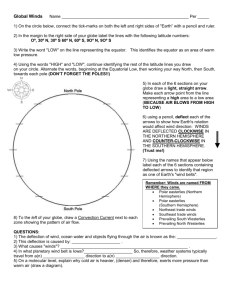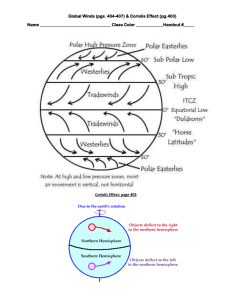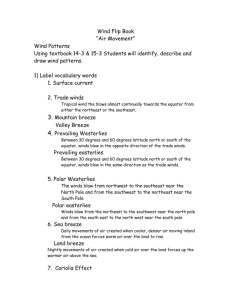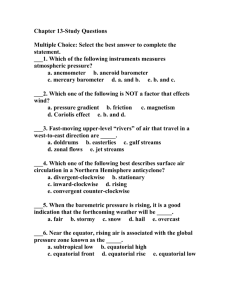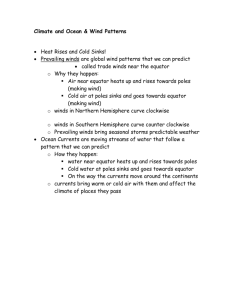Trade Winds, Westerlies, and Easterlies Explained
advertisement
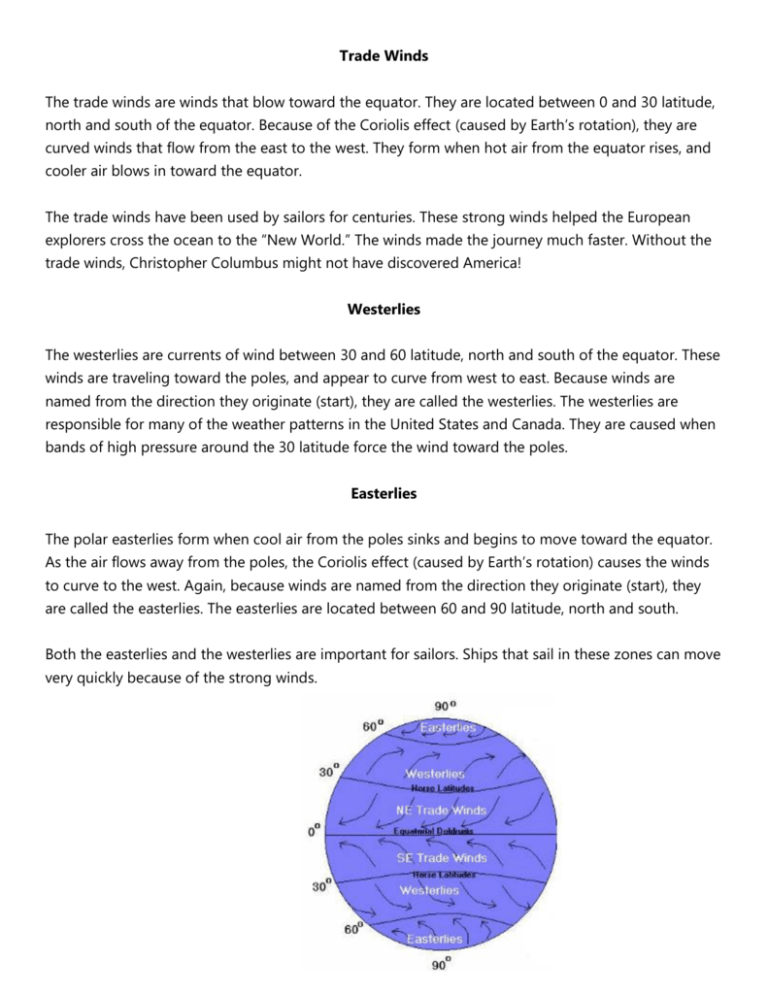
Trade Winds The trade winds are winds that blow toward the equator. They are located between 0 and 30 latitude, north and south of the equator. Because of the Coriolis effect (caused by Earth’s rotation), they are curved winds that flow from the east to the west. They form when hot air from the equator rises, and cooler air blows in toward the equator. The trade winds have been used by sailors for centuries. These strong winds helped the European explorers cross the ocean to the “New World.” The winds made the journey much faster. Without the trade winds, Christopher Columbus might not have discovered America! Westerlies The westerlies are currents of wind between 30 and 60 latitude, north and south of the equator. These winds are traveling toward the poles, and appear to curve from west to east. Because winds are named from the direction they originate (start), they are called the westerlies. The westerlies are responsible for many of the weather patterns in the United States and Canada. They are caused when bands of high pressure around the 30 latitude force the wind toward the poles. Easterlies The polar easterlies form when cool air from the poles sinks and begins to move toward the equator. As the air flows away from the poles, the Coriolis effect (caused by Earth’s rotation) causes the winds to curve to the west. Again, because winds are named from the direction they originate (start), they are called the easterlies. The easterlies are located between 60 and 90 latitude, north and south. Both the easterlies and the westerlies are important for sailors. Ships that sail in these zones can move very quickly because of the strong winds.

